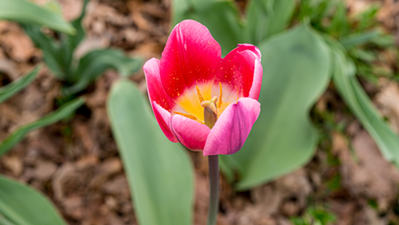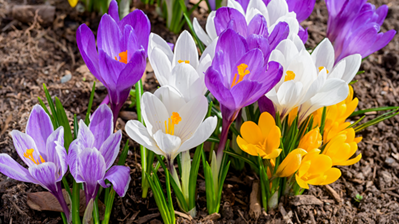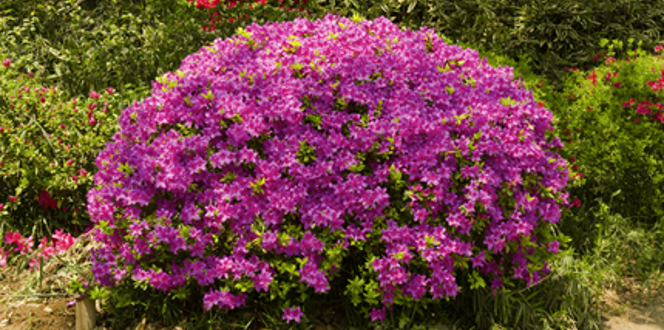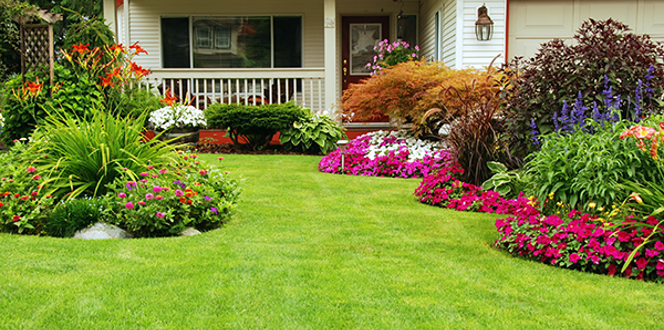The blooming of beautiful flowers, greeting you to a new season, is what makes early spring so exciting.
After a long, dull, gray winter, bits of brilliant color bring a smile to even the most sullen. The yellows and purples popping out of the snowy banks rejuvenate us.
Spring bulbs are the earliest risers of the late winter/early spring in your garden. These happy brights peek through the snow, casting color across an entryway or landscape bed. They make us stop and notice the changing season that’s emerging. You might even feel a bit warmer when you see those eye-catching colors come through.
The bulbs that delight us in spring are actually planted in fall. You may not realize it just yet, but after a long winter, you’ll wish you’d thought about spring bulbs in autumn. That’s why we’re here: to tell you how to plant flower bulbs so as you take a break from other things in the garden, you can take the opportunity to set yourself up for a memorable spring.
How to Plant Flower Bulbs

You might be worried about how to plant flower bulbs thinking you’ll mess something up, but we have some good news: They are actually some of the easiest flowers to grow.
Here’s what you need to do:
- Plant bulbs six weeks before the ground freezes in winter; for many states, this is in September/October. A good sign is when the leaves first start to change color.
- Determine where you want to plant your bulbs and make sure the soil is nice and loose; add organic matter if necessary. Make sure your planting spot also has well-drained soil.
- Different bulbs have different requirements, so read about planting depth and planting area prep for each type. The general rule is to plant spring bulbs 2 to 3 times as deep as the bulb is tall. Typically, you’ll plant most daffodils or tulips 6 inches deep and smaller bulbs 3 or 4 inches deep.
- Dig a hole in the ground to the right depth and then gently place the bulb in the ground with the roots down and the tip up.
- Cover with soil.
- Add 2 inches of mulch on top of the ground to keep the soil warm and retain moisture for the bulbs to grow.
- Water deeply after planting. Water again before the ground freezes.
Daffodils

One of the most popular spring flowers for their sunny yellow color, daffodil bulbs begin to bloom in early spring, reaching peak bloom about one month after the final frost.
A great entry-level bulb, you can’t go wrong with daffodils; the long-blooming color just can’t be beat. Try planting them in rows to line walkways or garden beds. A bonus: Daffodils are deer and rodent resistant.
What’s more, they come in many varieties from trumpet-shaped to large-cupped to double and more.
When selecting daffodil bulbs, remember to choose those with firm shapes. Usually, you’ll plant them 3 to 5 inches deep.
- Grow zones: 3 to 8
- Height: 10 to 20 inches tall
- When do daffodils bloom: Spring
- Sun exposure: Full sun to partial shade
Tulips

Brightly colored tulips are the jewels of your spring garden, adding lots of great color. These cup-shaped beauties can be single or double and vary in shape from simple, small cups to more goblet-sized tulip flowers.
Tulips love full or afternoon sun and well-drained soil. There are more than 3,000 different varieties of tulips In fact, if you plant different varieties of tulips, you can actually have tulips blooming from early to late spring.
- Grow zones: 3 to 8
- Height: 10 to 18 inches tall
- When do tulips bloom: Spring
- Sun exposure: Full sun
Hyacinths

Ever wonder, as you’re walking through a beautiful spring bulb garden, where that lovely scent is coming from? Usually the best and most intense fragrance of spring is coming from the hyacinth.
Hyacinths have spiky flower stalks in shades of blues, purples, and pinks that partner well with other spring bulbs, like tulips and daffodils. For the strongest scent in your garden, plant hyacinths in groups approximately 6 to 8 weeks before the first frost.
These aromatic blooms are also deer and rodent resistant, so that’s one thing you don’t have to worry about as you look forward to these lovely spring flowers.
- Grow zones: 3 to 7
- Height: 6 to 12 inches tall
- When do hyacinths bloom: Mid-spring
- Sun exposure: Full sun
Crocus

Nothing marks the arrival of spring-like the crocus, which is usually the first spring bulb to emerge, peeking up through the snow well before other flowers make an appearance.
Crocus flowers come in blue, lilac, lavender, and yellow. When planting crocus bulbs, you typically plant them 4 inches deep. Here’s a trick on how to plant crocus bulbs: Mix different species in mass plantings for an extended bloom time.
- Grow zones: 3 to 8
- Height: 3 to 8 inches tall
- When do crocus bloom: Early spring
- Sun exposure: Full sun
When Is It Too Late to Plant Spring-Flowering Bulbs
Ideally, you want to plant spring bulbs in the fall -- anywhere from September to December, depending on your location and climate conditions. This is usually when they are in a period of dormancy and the soil temperature and moisture levels are perfect for establishing roots before the ground freezes.
Some types are more forgiving when planted a little late. Tulips are one of them; as long as the ground isn’t frozen, you can plant them. But in locations with very cold, long winters -- hardiness zones 1 to 4 -- it’s best to plant bulbs in September or early October. In milder locations -- hardiness zones 5 to 7 -- you can plant through November or early December in most cases.
In most cases, as long as the ground isn’t frozen, you can still get a chance to choose bulbs to plant in fall to guarantee some much-needed spring color.







